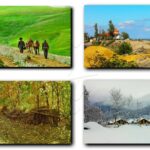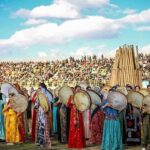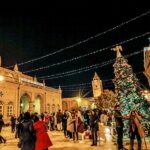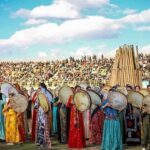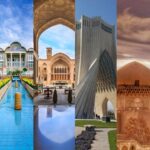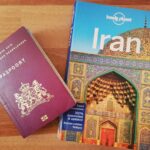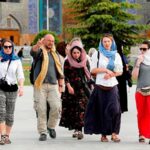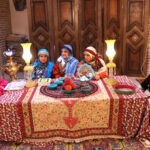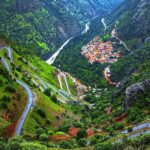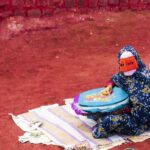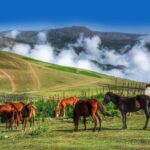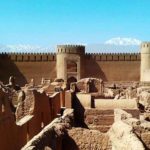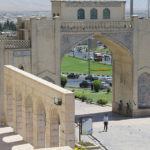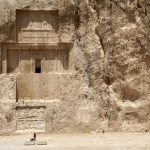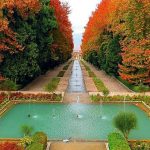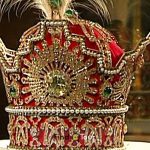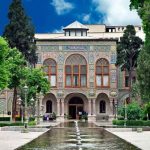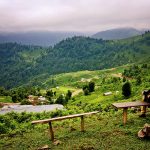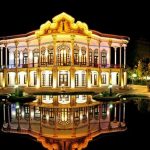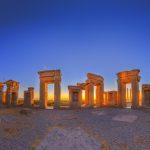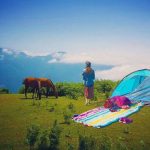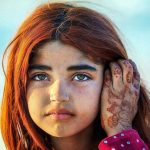Shab-e Yalda or the night of Cheleh is one of the oldest Iranian celebrations. On the last night of autumn, as the longest night of the year, it is celebrated with great enthusiasm. Yalda night or Shab-e Cheleh, just like Chaharshanbeh Soori and Nowruz, is one of the oldest Iranian celebrations. It starts at sunset on the last day of autumn and ends with the sunrise on the first day of winter. Shab-e Yalda, both before and after Islam, had a special place in Iranian culture. Motivation for the period of distant and near relatives has always been considered a blessed table. An issue that provides the basis for greater communication and stronger bonds between families. On the eve of Yalda night, indescribable passion arises among Iranian families. Because, they want to prepare for this night.
Shab-e Yalda
All about Shab-e Yalda
Shab-e Yalda is also known by letters such as Shab-e Cheleh, Unbreakable Sun, Milad Mehr, etc. It is called the last night of autumn and the longest night of the year. The celebration of Yalda night among Iranians is over seven thousand years old. In fact, our ancestors realized that the first night of winter is the longest night of the year. Cold and short days gradually come to an end and are replaced by light and long days. The ancient Iranians, like many nations, viewed light as a symbol of sacred things. They believed that on the longest night of the year, the demonic darkness would end. Torches and lights were lit on the darkest night of autumn to counteract the darkness. Together they celebrated and rejoiced to welcome the sunrise.
More about Shab-e Yalda in the past
The people of ancient times were engaged in animal husbandry and agriculture. They adjusted their lives to nature. So that the change of seasons and the shortness or length of night and day had a great impact on their lives. Therefore, they attached special importance to light, heat and long days. It was considered good and pleasing. But the winter, the cold, and the long nights were not very pleasant to them. In the ritual of Mehr, the last night of autumn is considered as the birthday of the sun. Shab-e Cheleh is actually the night of the birth and appearance of the sun.
What day is Shab-e Yalda?
The time interval between sunset on the 30th of Azar (December 20) and sunrise on the first of Dey (December 21) is the night of Yalda. In the past, Iranians spent this night in the foothills of the Alborz Mountains. And they waited until the dawn broke and the sun rose again. In some of the places of worship of the followers of the Mehr religion, a prayer ceremony was held on the night of Yalda. To ask God for the defeat of the devil and the victory of love.
When is Yalda night?
On the first day of Dey (December 21) every year, the earth reaches the point of winter solstice. Thus, the shortest day and longest night of the year occur in the Northern Hemisphere and the longest day of the year occurs in the Southern Hemisphere. Interestingly, the length of the night is not the same in the Northern Hemisphere. In fact, the height of Yalda night depends on the geographical location. On the night of Yalda, the distance between the sun and the celestial orbit reaches its maximum. That’s why the longest night of the year happens. However, this length is only one minute different from other nights.
The reason for naming Shab-e Cheleh
The number 40 has long had a special place in Iranian culture. The ancient Iranians divided winter into “big cheleh” and “small cheleh”. Which consisted of two forty-day sections. The last night of Azar is called Cheleh. Because it indicates the beginning of the great storm and the coming of winter cold. Exactly 40 days later, the celebration of the centenary is held, which coincides with the end of the great chelleh and the beginning of the small chelleh.
Yalda night customs and traditions
Yalda celebration, similar to Iranian celebrations, is held periodically and as a family. In this ceremony, a table with special foods is seen. It often consists of nuts and seven types of fruit. Sometimes there are more than seven types of these foods, including traditional and non-traditional sweets. A few days before Yalda night, there is a lot of excitement in the streets and bazaars. You see people shopping and preparing for this ancient celebration. This celebration is often hosted by the elders, which is a memorable and unforgettable account. The most important part of this celebration can be considered as the period and overnight stay of family members and relatives. They spend the longest night of the year together happily and talking.

overnight with family members and relatives
What should we eat on Shab-e Yalda?
Pomegranate and watermelon have been in the main food of Yalda night for a long time. It is said that these fruits are used because of their red color. Red is a symbol of the sun and Yalda is a symbol of sunrise and light. Watermelon is a summer fruit. According to the ancients, eating watermelon on Yalda night will not harm you during the winter, illness and cold. Pomegranate is another Yalda night food. If you look at the red pomegranate seeds, you can see why it is considered a symbol of happiness. Other Yalda foods include apples, oranges, persimmons, kiwis and tangerines. Yalda night nuts also include almonds, walnuts, pistachios, hazelnuts and dried fruits such as dried figs, dried berries and raisins.

main food of Yalda night
Is Yalda night only for Iranians?
Yalda night has been celebrated in many countries. But these celebrations were not limited to Iran and its territory. Every year, Iran Destination organizes a Yalda tour on the occasion of Yalda, which you can join us. You can join our team, Iran Destination, and get more acquainted with this traditional ceremony. Iran travel agency, Iran Destination, will organize your trip to Iran. You can offer your tailor-made trip to Iran or visit our programs on the Iran tour page. You can contact to our Iranian travel agency, our agents are online to answer all your questions.

























